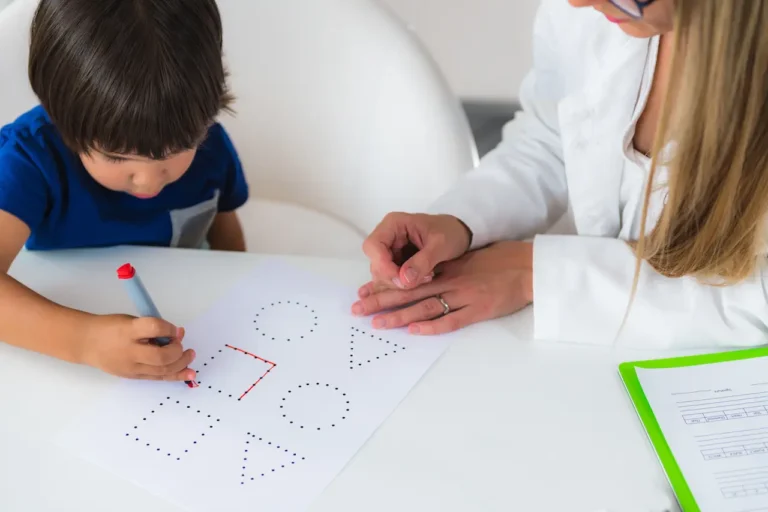Pediatric occupational therapy assessments are essential for evaluating children’s developmental needs, pinpointing potential delays, and planning effective interventions. Understanding the variety of assessments available can help professionals address specific concerns such as sensory processing, motor skills, or cognitive development. Explore the major categories of assessments and their applications in pediatric occupational therapy.
Pediatric Occupational Therapy Assessments
In occupational therapy, assessments are tailored to evaluate different developmental domains in children. For instance, the Denver Developmental Screening Test II checks for delays in personal-social, fine motor, language, and gross motor areas.
- Purpose: Identify early developmental delays.
- Use: Offers a structured task performance and observation method for children aged 1 month to 6 years.
- Tip: Familiarize yourself with benchmark age milestones to predict and prepare for potential outcomes.
Want to see a complete breakdown? Join now for full access!
OT Assessment for Children
Occupational therapy assessment tools for children vary widely. Some focus on sensory experiences, while others evaluate motor or cognitive skills.
Motor Assessments
The Bruininks-Oseretsky Test of Motor Proficiency (BOT-2) is a key tool for assessing motor abilities such as speed and coordination.
- Population: Ages 4 to 21 years.
- Strategy: Practice motor skills with diverse activities like sports and crafts to cover the spectrum covered in this test.
Practice task-oriented group activities weekly to enhance motor skills and prepare for such assessments.
Discover how you can leverage these assessments for your students by accessing our complete guide with case studies and practice quizzes.
Free Pediatric Occupational Therapy Assessments
Utilizing pediatric occupational therapy assessments can sometimes be costly. However, many resources offer free tools that professionals can use to gauge children’s development accurately.
Our database provides access to comprehensive evaluations like the Sensory Profile and Infant/Toddler Sensory Profile, which assess reactions to sensory input through caregiver questionnaires.
Play/Social Participation Assessments
The Revised Knox Preschool Play Scale assesses play skills that indicate developmental stages, strengths, and interest areas.
- Age Group: For children 0-6 years old.
- Example Scenario: Observe a child’s play in both indoor and outdoor settings for naturally diverse data.
In our full guide, we explore the importance of play in child development with detailed case examples. Join now for full access!
Pediatric Assessments in Occupational Therapy
Understanding pediatric assessments involves recognizing the wide range of methods used to evaluate different abilities.
Visual Motor/Perceptual Assessments
The Beery-Buktenica Developmental Test of Visual Motor Integration is pivotal in assessing visual and motor integration.
- Method: Involves copying geometric shapes.
- Action Plan: Enhance skills with daily drawing exercises to improve shape replication abilities.
- Consider integrating these evaluations into your weekly assessments to continually monitor progress.
Through our exclusive resources, you can deepen your understanding of these assessments. Join now for full access!
OT Evaluation for a 3-Year-Old
Conducting an OT evaluation for a 3-year-old involves tools like the Hawaii Early Learning Profile (HELP), assessing six developmental domains without standardized norms.
- Goal: Screen for cognitive, motor, language, socio-emotional, and self-help abilities.
- Implement weekly assessments to monitor and adjust developmental milestones for preschoolers.
Equip yourself with a robust framework for early childhood assessments in our comprehensive guide. Join now for full access!
Can you identify the key differences between cooperative and project groups in pediatric assessments? Dive into our detailed chapters and case studies to explore these nuances.
Want detailed practice tips to ace the NBCOT® exam? Join now for full access!
What are pediatric occupational therapy assessments used for?
Pediatric occupational therapy assessments are used to evaluate children’s developmental needs, identify potential delays, and plan effective interventions. They help address specific concerns such as sensory processing, motor skills, and cognitive development.
How does the Denver Developmental Screening Test II aid in child assessment?
The Denver Developmental Screening Test II identifies early developmental delays in areas such as personal-social, fine motor, language, and gross motor skills. It is used for children aged 1 month to 6 years and involves structured task performance and observation.
What is the purpose of the Bruininks-Oseretsky Test of Motor Proficiency (BOT-2)?
The Bruininks-Oseretsky Test of Motor Proficiency (BOT-2) assesses motor abilities like speed and coordination in children and young adults aged 4 to 21 years. It evaluates motor proficiency across various activities to identify strengths and areas for improvement.
Are there free resources for pediatric occupational therapy assessments?
Yes, there are free resources available for pediatric occupational therapy assessments. These resources include comprehensive evaluations like the Sensory Profile and Infant/Toddler Sensory Profile, which assess reactions to sensory input through caregiver questionnaires.
How is the Beery-Buktenica Developmental Test of Visual Motor Integration conducted?
The Beery-Buktenica Developmental Test of Visual Motor Integration involves copying geometric shapes to assess visual and motor integration. Practicing drawing exercises can enhance a child’s ability to replicate shapes, which is beneficial for visual motor development.



